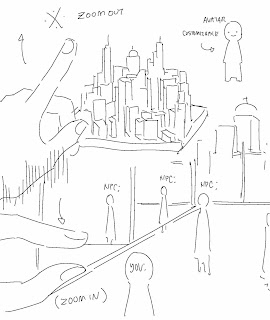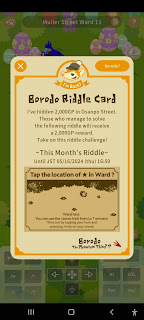Academic paper on World building
Lee, Goun
Professor Hyun Jung
Interaction Design
17 March 2024
Fictional Worlds
The idea of conjuring up a world that branches off from reality has been a topic of discussion for world designers. To create and develop a fictitious world filled with elements that immerse people in that environment. The question asked is what makes a world and how is it created?
The word “Design fiction” has been mentioned in a study by Coulton et al., in 2017 and is defined as the building of worlds. This in no case is related to narratives and storytelling as seen in countless media; it mainly focuses on the technical aspects of world-building and what makes the world what it is. The incorporation of diegetic prototypes as explained makes up the world and is seen as natural in that set context. Moreover, the introduction of artifacts serves as entry points that bring believability and immersion to audiences, letting them see it as credible from the details of the world and its consistency. These artifacts could be viewed through the metaphor of a zoomable perspective showing the bigger picture from smaller components.
The game of drones and the empathy engine were two example projects that support the aim of design fiction, and how it is practiced. Out of the two, although Game of Drones was clarified to be fictitious, it was believed to be real and had its paper reviewed, whereas Empathy engine was not, despite it going through the same process as the former with consistent data. This stems from the fact that modern technology matches up with the details from the project's realistically grounded concept, juxtaposed with the Empathy engine and the ongoing research on the topic of empathy-detecting machines. To enhance the visual imaginings of their worlds materials such as storyboards, videos, and maps were utilized. From this, the definition of design fiction was realized. In summary, It is how worlds are designed, consisting of small details that make the world feel alive; and its separation from stories is evident in how unimportant and optional it is in the grand scheme of things.
But of course, it is not fully considered a world without being lived in. This is where research by Smith,H in 2002 comes in. In his research, he studies the behavior of individuals through an online site that was a host to encourage building and creation. Inside the site were hundreds of worlds that had a place for different building communities, though each world had its charm, one similarity these words all had was restriction and censorship. The limitation to creating freely has raised the question of what it would be like if these barriers were erased. Then comes the creation of a world where such obstacles did not exist for a limited time of 30 days. Through this study observations such as found community and collaboration were recorded but with positive findings come negative ones as well, such as online terrorism, stalking, and inappropriate behaviors.
Avatars were stand-ins for the player and were customizable. This made it easier for recognition yet created an identity with their uniqueness within the world, (Smith, 2002). Anonymity played a big role in the behavior of rogue avatars. The sense of security of hiding from a screen name and avatar along with the nonexistent rules might have allowed unleashing havoc without consequence as seen in the terrorist group that was brought up. Nonetheless, the shared communal aim to build commenced and conjured up structures that mimicked reality. These replicas of real-life establishments like churches, nightclubs, and cabins came with pieces of built-in characteristics unnecessary to virtual constraints, i.e. stairs and chairs. However, the essence of maintaining realism supported the argument of these diegetic prototypes.
These two reports on world-building gave me a clear understanding of the process and development of how a world is created. The division between the technical and human sides is the main foundation on how easy it is to believe a word that doesn't exist yet is not far from our own. This is why stories in movies and games have succeeded in garnering audiences who feel connected to the world shown in that media. The complex stories of sci-fi like Dune and Star Wars have been praised for their intricate world-building where fans to this day can explain and name elusive key information about the hierarchy, society, religion .These are examples that show the power of a convincing world that so happens to tell a story.
References
1. Hudson-Smith, A. (2002). 30 Days in Active Worlds – Community, Design and Terrorism in a Virtual World. In R. Schroeder (Ed.), The Social Life of Avatars (pp. 77-89). Springer.
2. Paul, C., Joseph, L., Miriam, S., & Mike, S. (2017). “Design Fiction as World Building,” Proceedings of the 3rd Biennial Research Through Design Conference, pp.164-179.


Comments
Post a Comment